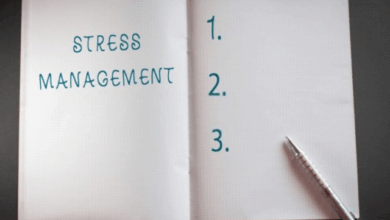Boost productivity using effective daily routines

Ever feel like you’re constantly running on a treadmill, getting nowhere fast? Like your to-do list is mocking you with its endless length? You’re not alone. So many of us struggle with feeling overwhelmed and unproductive. It’s not about needing more hours in the day, it’s about making the most of the ones you have. The good news is, you can take control! This isn’t about becoming a productivity robot; it’s about finding a rhythm that works for you and allows you to achieve your goals without sacrificing your sanity. We’ll explore how to build a daily routine that boosts your focus, reduces stress, and helps you actually enjoy your life, and we’ll look at some fantastic time management tools to help you along the way. From simple techniques to helpful apps, we’ll cover everything you need to start feeling more in charge of your time. Think of it as reclaiming your day, one small step at a time. It’s about working smarter, not harder, and finally getting things done.
Key Takeaways
- Establishing a consistent morning routine sets a positive tone for the day.
- Prioritizing tasks using methods like the Eisenhower Matrix helps focus on what truly matters.
- Time management tools, like calendars and to-do list apps, can significantly improve organization.
- Batching similar tasks together minimizes context switching and boosts efficiency.
- Regular breaks are crucial for maintaining focus and preventing burnout.
- Learning to say “no” protects your time and prevents overcommitment.
- Reviewing and adjusting your routine regularly ensures it continues to meet your needs.
The Power of a Daily Routine
Humans are creatures of habit. A well-structured daily routine isn’t about rigidity; it’s about creating a framework that reduces decision fatigue and allows you to operate on autopilot for certain tasks. Think about it: how much mental energy do you spend deciding what to do next? A routine minimizes those decisions, freeing up your brainpower for more important things. This is especially helpful for those struggling with procrastination or feeling consistently overwhelmed. A consistent schedule can also improve your sleep, reduce stress, and even boost your mood. It’s a surprisingly powerful tool for overall well-being. Consider starting small – perhaps a consistent wake-up time and a quick morning ritual.
Mastering Prioritization: The Eisenhower Matrix
Not all tasks are created equal. Some are urgent, some are important, and some are…well, just distractions. The Eisenhower Matrix (also known as the Urgent-Important Matrix) is a fantastic time management tool for sorting through your to-do list. It categorizes tasks into four quadrants:
- Urgent & Important: Do these immediately. (Crises, deadlines)
- Important, But Not Urgent: Schedule these for later. (Planning, relationship building)
- Urgent, But Not Important: Delegate these if possible. (Some meetings, interruptions)
- Neither Urgent Nor Important: Eliminate these. (Time wasters, trivial activities)
By using this matrix, you can quickly identify what deserves your immediate attention and what can be put off, delegated, or simply discarded. This prevents you from getting bogged down in busywork and allows you to focus on activities that truly move the needle.
Essential Time Management Tools: Digital & Analog
Luckily, there’s a wealth of time management tools available to help you stay organized. Here are a few popular options:
- Digital Calendars (Google Calendar, Outlook Calendar): Essential for scheduling appointments, deadlines, and recurring tasks. Set reminders to stay on track.
- To-Do List Apps (Todoist, Any.do, Microsoft To Do): Great for breaking down large projects into smaller, manageable steps. Many offer features like prioritization, due dates, and collaboration.
- Note-Taking Apps (Evernote, OneNote): Useful for capturing ideas, brainstorming, and organizing information.
- Pomodoro Timer Apps: Implement the Pomodoro Technique (see below) with dedicated apps.
- Paper Planners & Bullet Journals: For those who prefer a tactile approach, a physical planner can be incredibly effective. Bullet journaling allows for customization and creative organization.
The best tool is the one you’ll actually use. Experiment with different options to find what fits your workflow and preferences.
The Pomodoro Technique: Work Smarter, Not Longer
This popular time management tool is surprisingly simple yet incredibly effective. The Pomodoro Technique involves working in focused 25-minute intervals (called “pomodoros”) separated by short 5-minute breaks. After every four pomodoros, take a longer 20-30 minute break. This technique leverages the power of focused attention and regular breaks to prevent burnout and maintain productivity. It’s a great way to tackle challenging tasks and overcome procrastination. There are many free Pomodoro timer apps available for your phone or computer.
Batching: Group Similar Tasks Together
Context switching – constantly jumping between different types of tasks – is a major productivity killer. It takes time for your brain to refocus each time you switch gears. Batching involves grouping similar tasks together and completing them in one go. For example, instead of checking email throughout the day, dedicate a specific block of time to processing your inbox. Similarly, schedule all your phone calls for a single afternoon. This minimizes context switching and allows you to enter a state of “flow,” where you’re fully immersed in your work.
The Art of Saying “No”
Overcommitment is a common productivity trap. Saying “yes” to every request, even when you’re already stretched thin, leads to stress, burnout, and subpar work. Learning to politely decline requests that don’t align with your priorities is crucial for protecting your time and energy. Remember, saying “no” to something allows you to say “yes” to something else – something that truly matters to you. It’s a skill that takes practice, but it’s essential for effective time management.
Time Blocking: Schedule Everything
Time blocking takes calendar scheduling to the next level. Instead of just listing appointments, you block out specific chunks of time for specific tasks. For example, you might block out 9:00-11:00 AM for “Writing Project,” 11:00 AM-12:00 PM for “Email & Admin,” and so on. This creates a visual representation of your day and helps you allocate your time intentionally. It also forces you to be realistic about how long tasks actually take.
Minimize Distractions: Create a Focused Environment
Distractions are the enemy of productivity. Identify your biggest distractions (social media, email notifications, noisy coworkers) and take steps to minimize them. Turn off notifications, close unnecessary tabs, and find a quiet workspace. Consider using website blockers or noise-canceling headphones. Creating a focused environment is essential for deep work and maximizing your concentration.
The Importance of Regular Breaks
It might seem counterintuitive, but taking regular breaks actually increases productivity. Stepping away from your work for a few minutes allows your brain to rest and recharge. Get up and stretch, go for a walk, or simply close your eyes and breathe deeply. Short breaks can prevent burnout and improve your focus. Don’t underestimate the power of a little downtime.
Review and Adjust: Your Routine is a Living Document
Your daily routine isn’t set in stone. It’s a living document that should be reviewed and adjusted regularly to meet your changing needs and priorities. What worked well last month might not work as well this month. Experiment with different techniques, time management tools, and schedules until you find a rhythm that feels sustainable and effective. Don’t be afraid to make changes – the goal is to create a routine that supports your goals and enhances your well-being.
Leveraging Technology for Task Management
Beyond basic calendars and to-do lists, explore project management tools like Trello or Asana. These are particularly helpful for complex projects with multiple steps and collaborators. They allow you to visualize your workflow, assign tasks, and track progress. While they have a slight learning curve, the benefits can be significant, especially for team projects or managing personal goals with many moving parts.
The Two-Minute Rule: Tackle Small Tasks Immediately
If a task takes less than two minutes to complete, do it right now. Don’t add it to your to-do list or postpone it for later. This simple rule prevents small tasks from piling up and becoming overwhelming. Responding to a quick email, filing a document, or making a phone call – these are all tasks that can be knocked out in two minutes or less.
Prioritize Self-Care: It’s Not Selfish, It’s Essential
Productivity isn’t just about getting things done; it’s about maintaining your well-being. Make time for activities that nourish your mind, body, and soul. Exercise, meditation, spending time with loved ones, pursuing hobbies – these are all essential components of a balanced life. When you prioritize self-care, you’ll have more energy, focus, and resilience to tackle your goals.
Understanding Your Peak Performance Times
Everyone has times of the day when they’re more alert and focused. Identify your peak performance times and schedule your most demanding tasks for those periods. Save less challenging tasks for when your energy levels are lower. Working with your natural rhythms can significantly boost your productivity.
FAQs
Q: I’ve tried routines before, but I always end up abandoning them. What am I doing wrong?
A: Starting too big is a common mistake. Begin with one or two small changes, like a consistent wake-up time or a 15-minute morning walk. Gradually add more elements as you build momentum. Also, remember that life happens – don’t beat yourself up if you miss a day. Just get back on track the next day.
Q: What’s the best time management tool for someone who’s easily overwhelmed by technology?
A: A simple paper planner or bullet journal can be a great option. The tactile experience of writing things down can be calming and grounding. Focus on creating a system that feels intuitive and manageable.
Q: How do I deal with unexpected interruptions that throw off my schedule?
A: Accept that interruptions are inevitable. Build buffer time into your schedule to accommodate them. If possible, politely reschedule non-urgent interruptions for a later time.
Q: Is it okay to adjust my routine on weekends?
A: Absolutely! A rigid routine can be draining. Allow yourself some flexibility on weekends to relax, recharge, and pursue activities you enjoy. The goal is to create a sustainable routine, not a restrictive one.
Q: I struggle with procrastination. Can these techniques help?
A: Yes! Breaking down tasks into smaller steps (using a to-do list app), using the Pomodoro Technique, and prioritizing tasks with the Eisenhower Matrix can all help overcome procrastination. The key is to start somewhere, even if it’s just with a small step.
We’ve covered a lot of ground, but remember, building a productive daily routine is a journey, not a destination. Experiment with different techniques, find the time management tools that work best for you, and be patient with yourself. The goal isn’t perfection; it’s progress. Start small, stay consistent, and celebrate your wins along the way. You have the power to take control of your time and create a life that feels more balanced, fulfilling, and productive. Now, take a moment to reflect on what you’ve learned and identify one small change you can implement today. I’d love to hear about your experiences – feel free to share your thoughts and questions in the comments below! And if you found this helpful, please share it with your friends and family.
Hi, I’m Sophia! Welcome to my blog Try Stress Management (trystressmanagement.com), where I share simple, down-to-earth ways to handle stress and bring more calm into everyday life. Think of me as your friendly guide, offering practical tips, reflections, and little reminders that we’re all figuring this out together.
When I’m not blogging, you’ll usually find me with a good book, sipping tea, or exploring new walking trails. I believe small changes can make a big difference—and that a calmer, happier life is possible for everyone.




